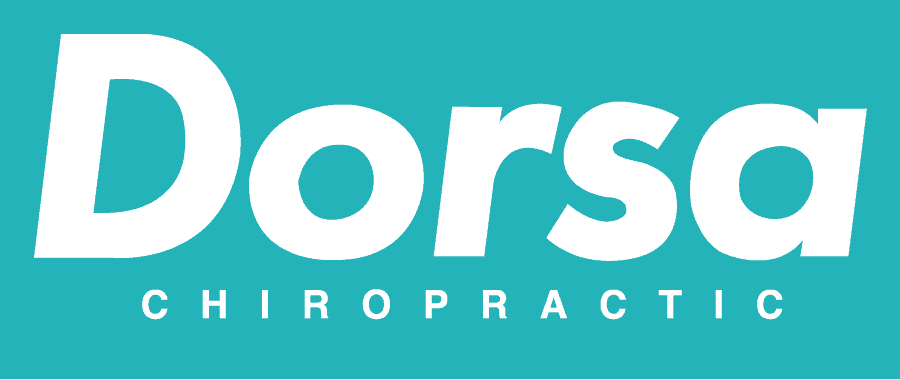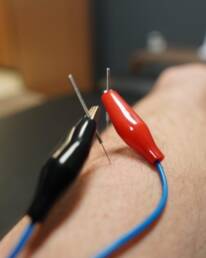At Dorsa Chiropractic in Denver, we understand the significant impact that temporomandibular joint (TMJ) disorders can have on your daily life. TMJ issues can cause pain and discomfort in the jaw, neck, and even lead to headaches, affecting your ability to eat, speak, and live comfortably. Our team of highly skilled and compassionate chiropractors is dedicated to providing cutting-edge solutions to alleviate TMJ-related pain and improve your overall well-being.
TMJ disorders affect millions of people worldwide, causing discomfort, pain, and restricted jaw movement. While there are various treatment options available, one innovative and promising approach gaining traction in recent years is dry needling. This non-invasive technique involves the strategic insertion of fine needles into specific trigger points, leading to remarkable improvements in TMJ-related symptoms. In this blog post, we will explore the fascinating world of dry needling for TMJ, discussing its mechanism, benefits, safety, and efficacy, providing you with a comprehensive guide to understanding and considering this treatment option.
I. Understanding TMJ Disorders:
Before diving into the details of dry needling, it’s crucial to comprehend TMJ disorders and their impact on daily life. The temporomandibular joint connects your jawbone to the skull and plays a pivotal role in chewing, talking, and facial expressions. TMJ disorders can stem from various causes, including stress, teeth grinding, misalignment of the jaw, or injury. Common symptoms include jaw pain, clicking or popping sounds, headaches, earaches, and difficulty opening or closing the mouth.
II. The Basics of Dry Needling:
Dry needling is a therapeutic technique that utilizes thin, solid needles to target specific trigger points within muscles, fascia, and connective tissues. Unlike acupuncture, which is rooted in traditional Chinese medicine and focuses on balancing energy flow, dry needling is based on Western medicine principles, aiming to release tension, promote blood flow, and trigger the body’s natural healing responses. By inserting needles into tight muscles or trigger points, practitioners aim to alleviate pain, restore function, and improve overall well-being.
III. The Mechanism of Dry Needling for TMJ:
Dry needling for TMJ relief is designed to address the underlying muscular tension and trigger points that contribute to jaw pain and dysfunction. When the fine needles are inserted into the affected muscles, they stimulate sensory nerves, causing a twitch response. This twitch response, also known as a local twitch response (LTR), leads to a release of tension and a reduction in muscle knots and tightness. As a result, the muscles around the TMJ area can relax, reducing pain and discomfort.
IV. Benefits of TMJ Dry Needling:
1. Non-Invasive Approach: Dry needling is a non-surgical and non-pharmacological treatment option, making it a favorable choice for those seeking natural remedies.
2. Targeted Pain Relief: The precision of dry needling allows for specific targeting of the affected muscles, providing efficient and localized pain relief.
3. Improved Jaw Function: By reducing muscle tension and promoting relaxation, dry needling can enhance jaw mobility and ease difficulties in opening and closing the mouth.
4. Reduced Dependence on Medication: With successful dry needling treatment, patients may find themselves less reliant on pain medications, avoiding potential side effects.
5. Complementary Treatment: Dry needling can be used in conjunction with other TMJ therapies, such as physical therapy and jaw exercises, to enhance overall outcomes.
V. Safety Considerations:
While dry needling is generally safe, it is essential to undergo treatment from a qualified and trained practitioner. Potential side effects, such as bruising, soreness, or mild bleeding at the insertion sites, are typically transient and minor. Patients with certain medical conditions or those taking blood-thinning medications should consult their healthcare provider before considering dry needling.
VI. Efficacy and Research:
Numerous studies have explored the efficacy of dry needling for TMJ disorders, and the results are promising. Research indicates that dry needling can significantly reduce pain and improve jaw function in patients with TMJ-related symptoms. However, more extensive research is needed to establish its long-term effectiveness and compare it to other treatment modalities.
TMJ dry needling offers a modern and effective approach to alleviate pain and discomfort associated with temporomandibular joint disorders. By targeting trigger points and promoting muscle relaxation, this non-invasive technique shows immense potential in improving jaw function and enhancing overall quality of life. As with any medical procedure, it is essential to consult a qualified practitioner and discuss the suitability of dry needling for your specific TMJ condition. By being informed about the benefits and safety considerations, individuals can make well-informed decisions and potentially find relief from the burden of TMJ disorders through the magic of dry needling.

Welcome to Dorsa Chiropractic. We started this practice to help people like you feel great!
When you visit us here at Dorsa Chiropractic, we’ll go over your injury, pain points, or general wellness goals. Our doctors will conduct an assessment to verify the root of your physical symptoms to come up with a plan for bringing your body back to health.

